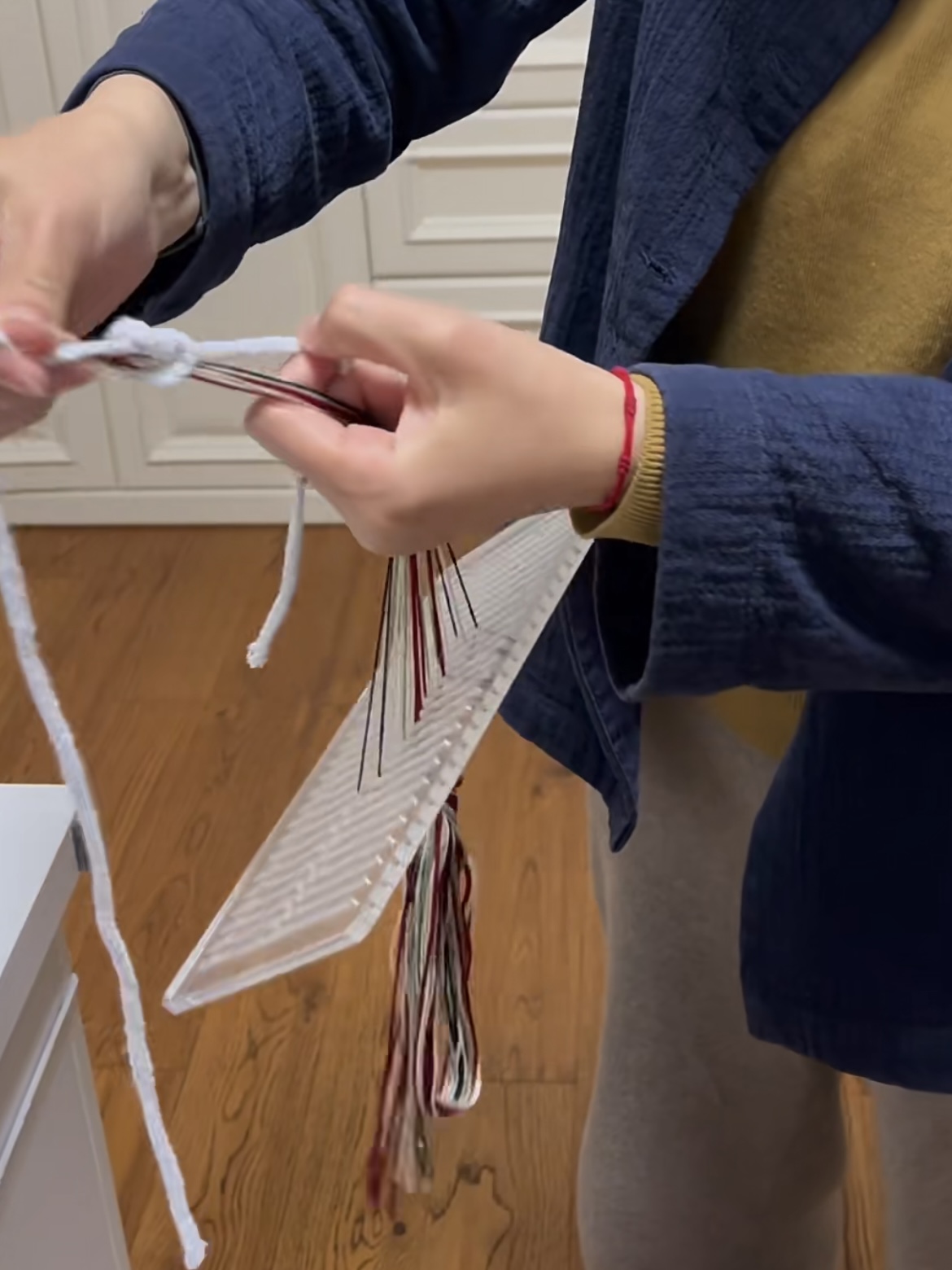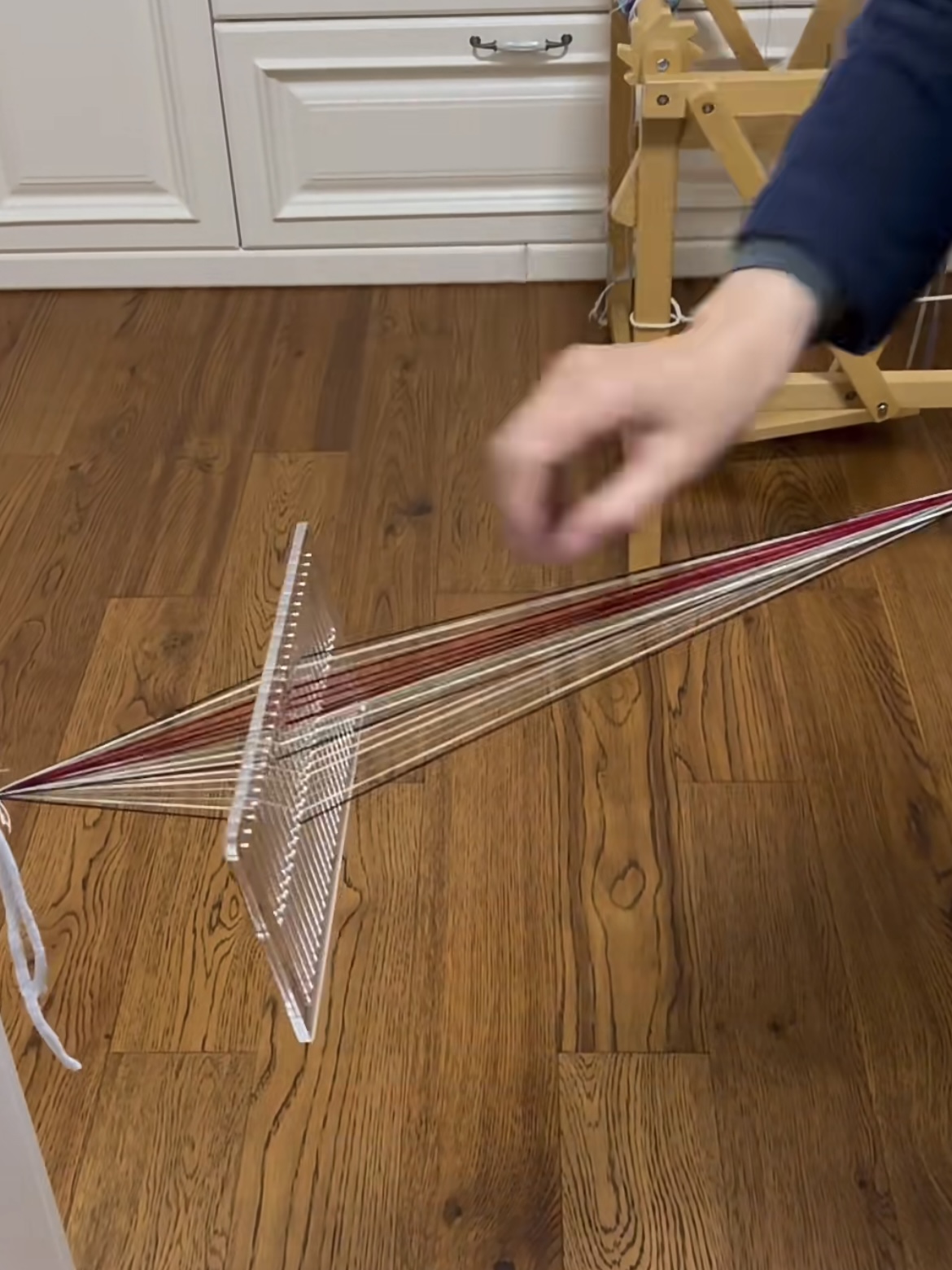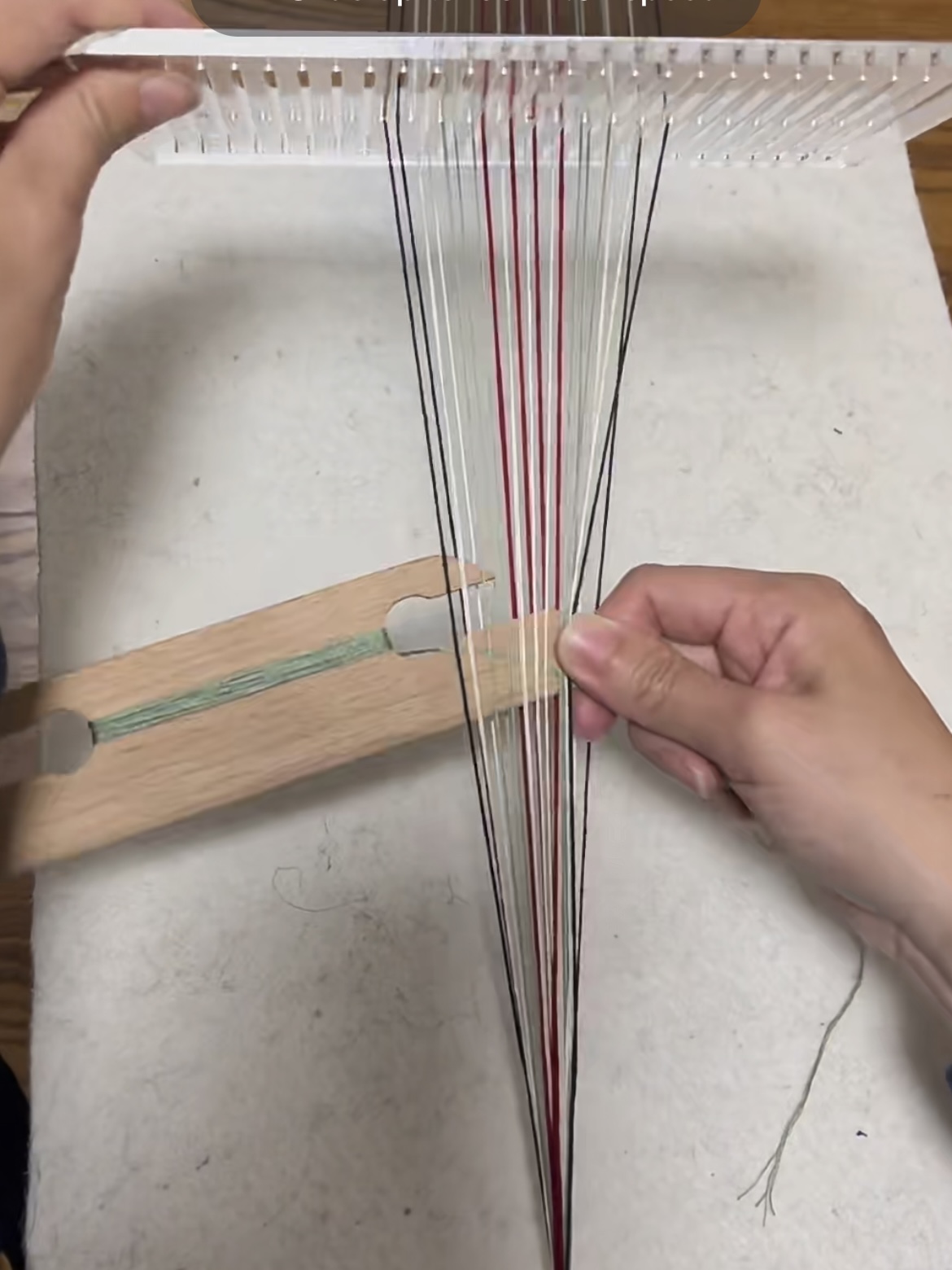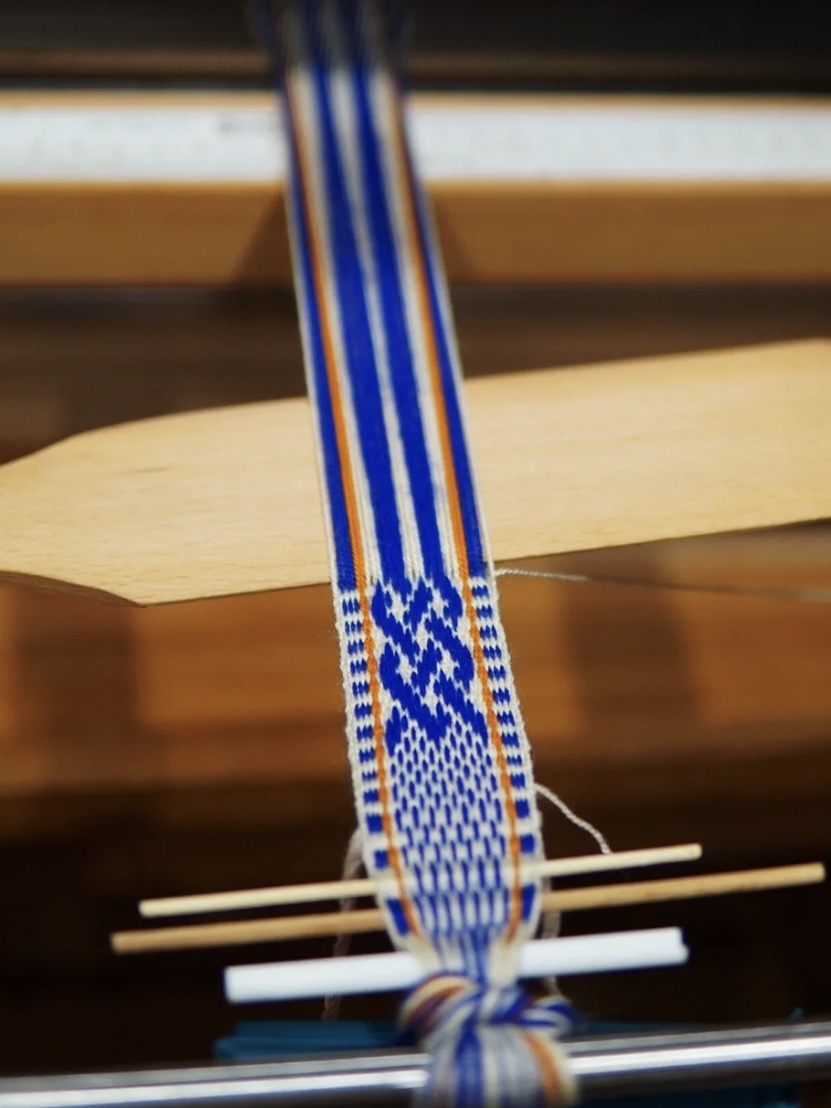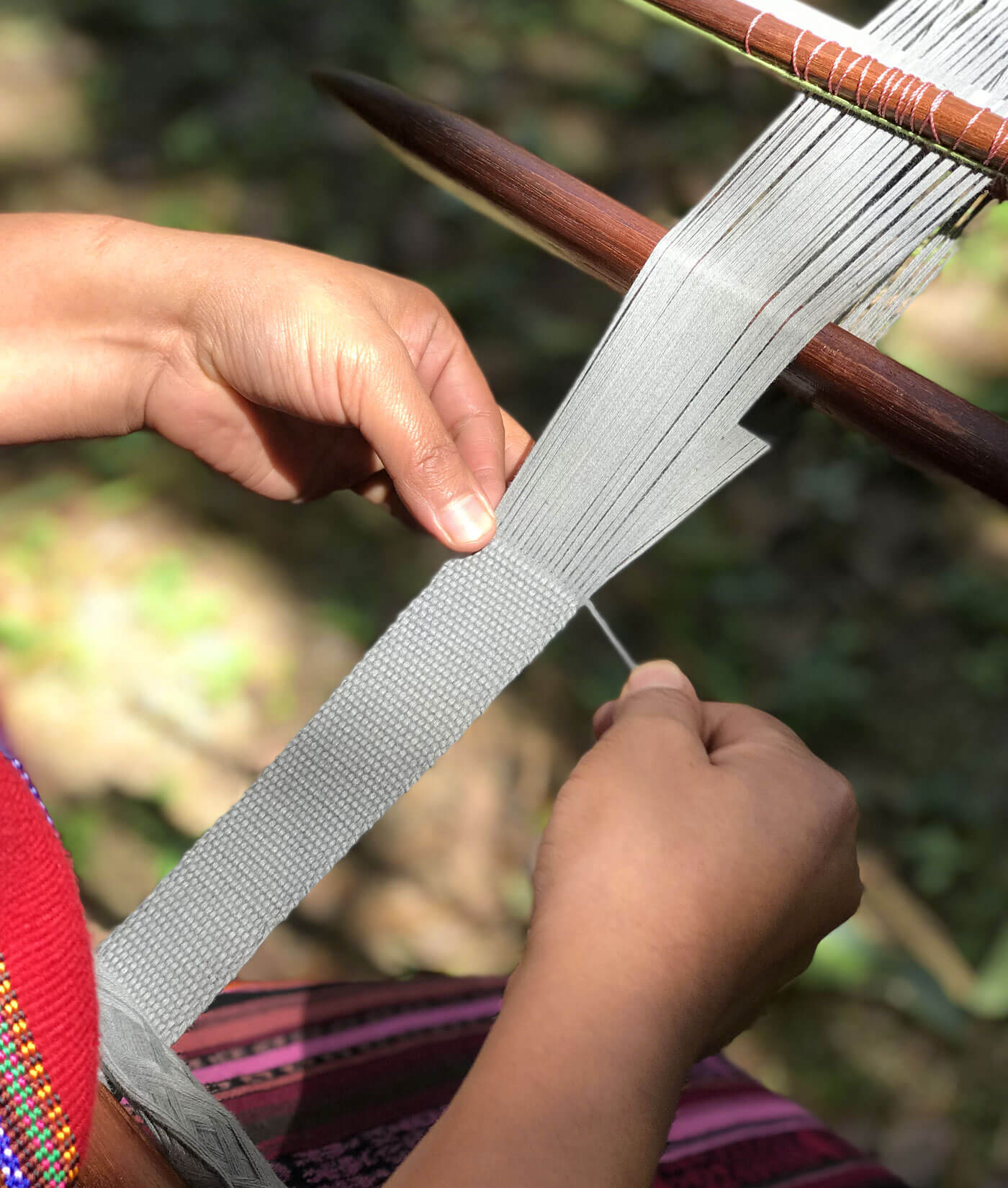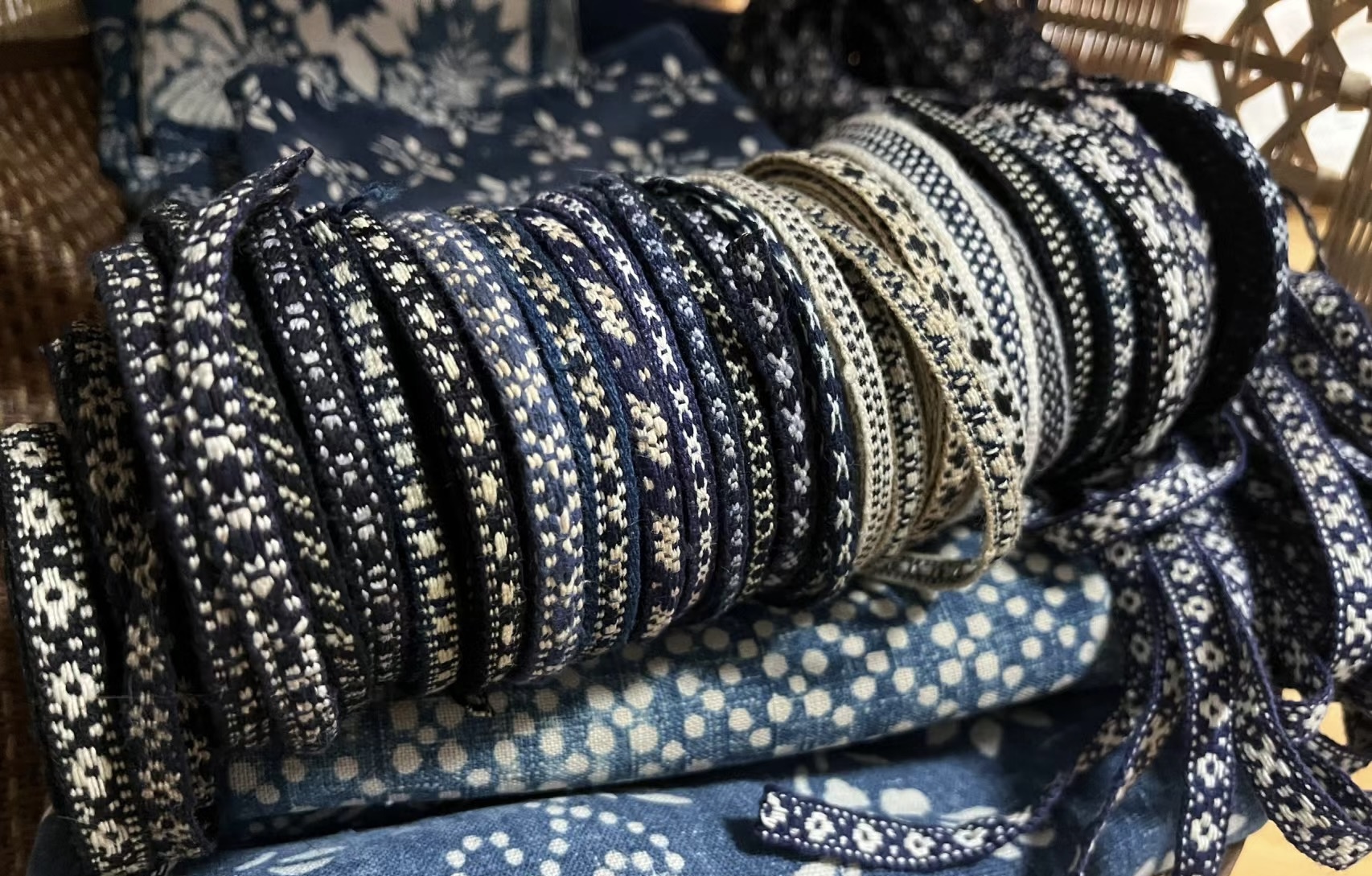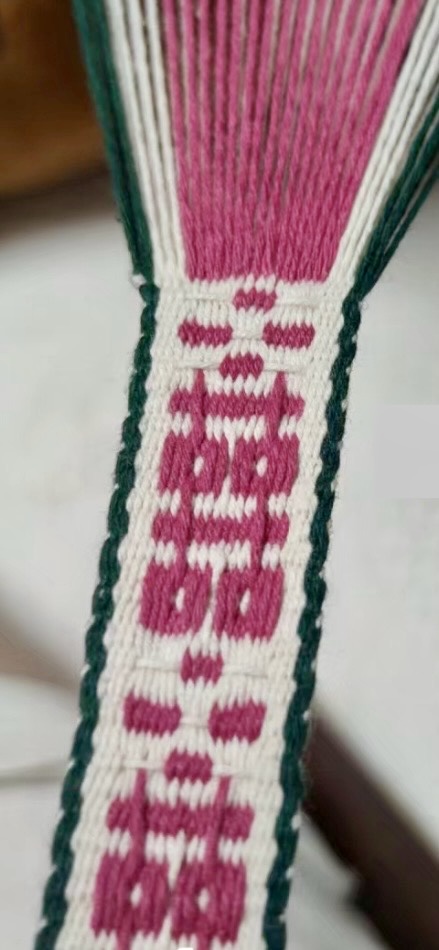Chongming Island
An island north of Shanghai, has a long-standing technique of backstrap weaving for band making.
Zhidai
Pinyin of band weaving, referring to the belt-like fabric made by backstrap weaving in China.
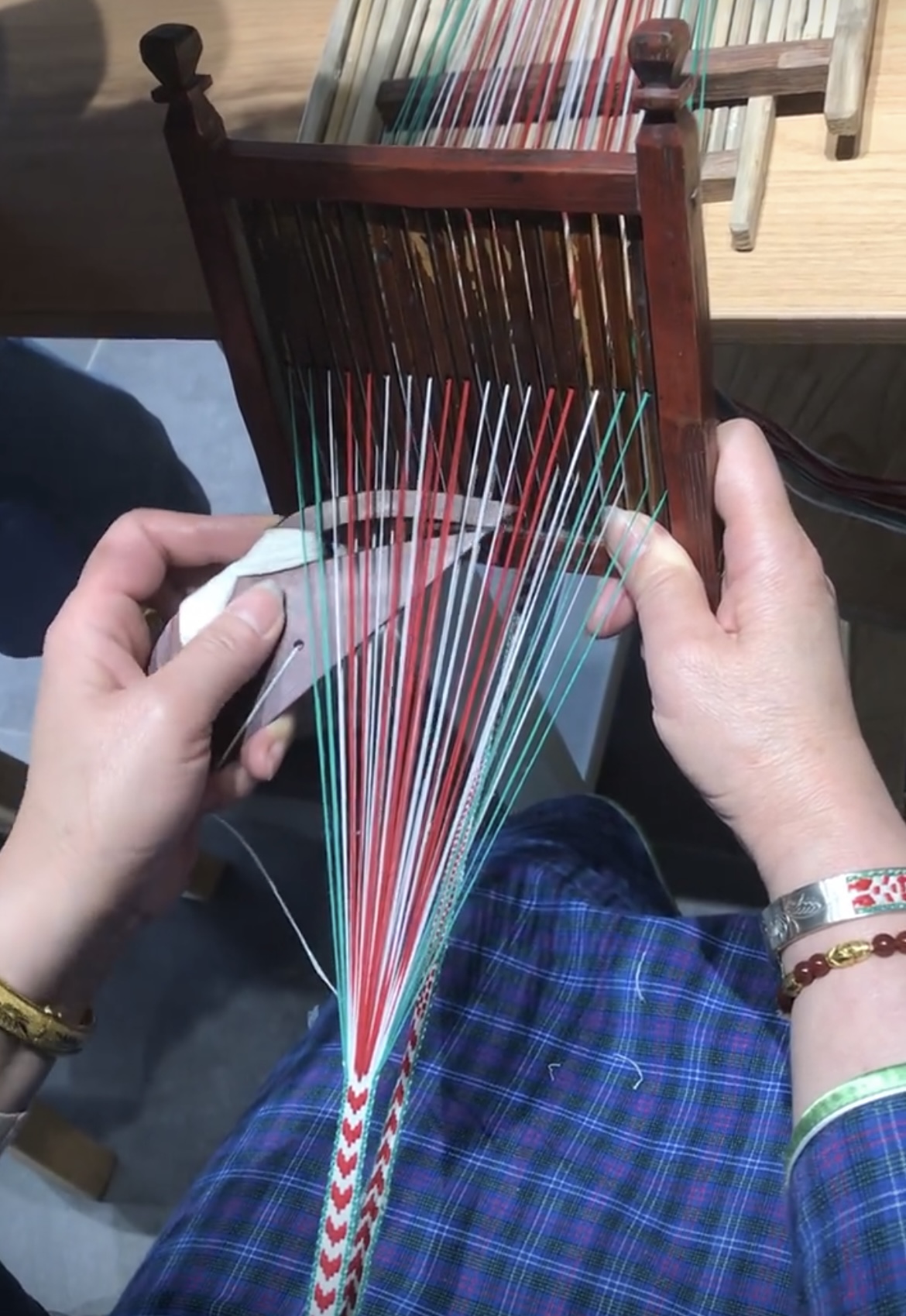
The process of weaving heart-patterned bands by a Chongming band weaving master
Backstrap Weaving
A traditional weaving method where one end of the warp threads is attached to the weaver’s waist and the other end is fixed to a stationary object. The weaver controls the tension by adjusting their body, making it ideal for portable, small-scale weaving like Chongming band weaving.
Shuttle
A tool used to pass the weft thread through the warp threads during weaving. It holds the thread and makes the weaving process easier and more efficient.
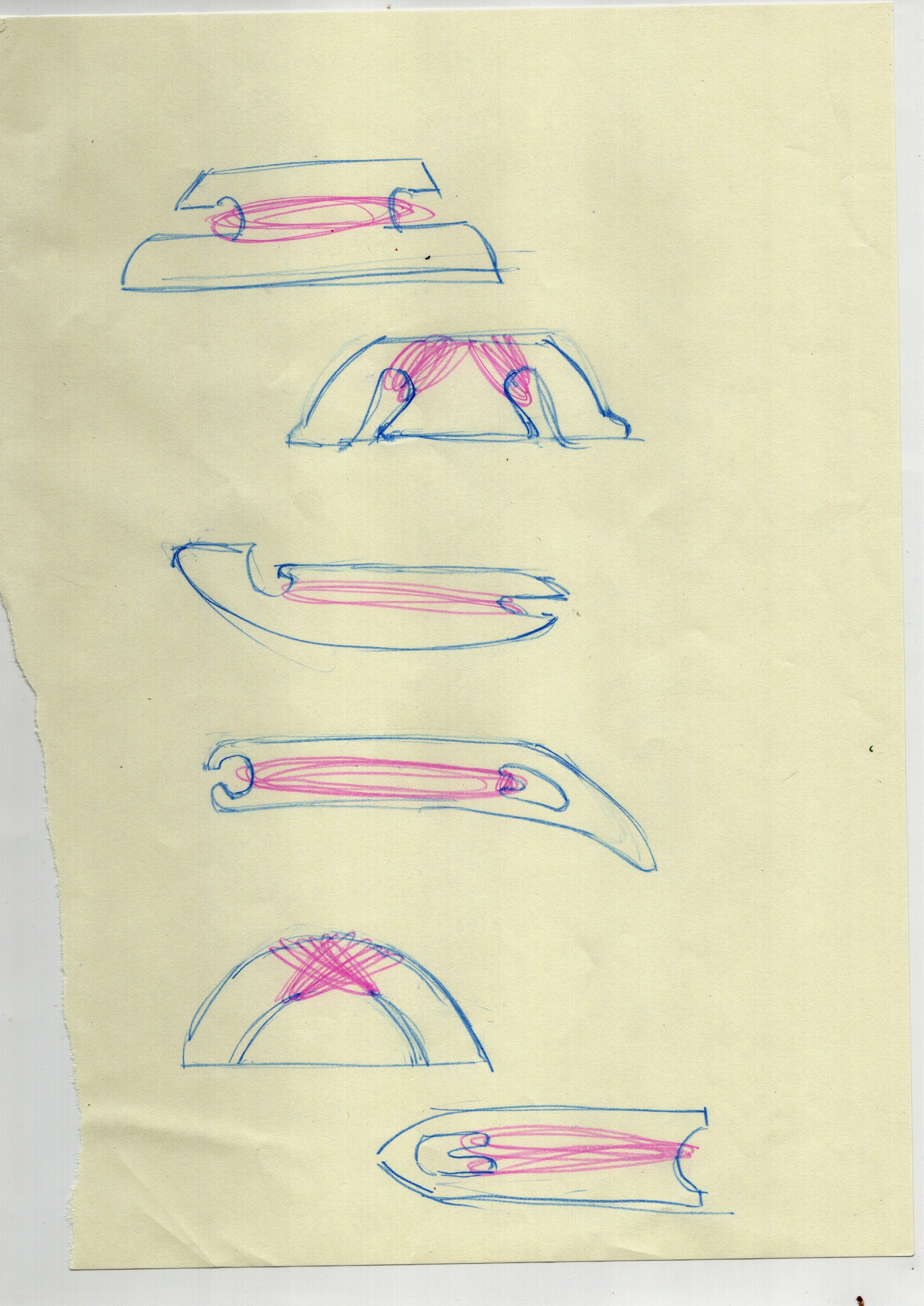
Sketches of some shuttles by Tianlan.H
Weaving Board (Heddle)
A wooden frame or flat board with small slots and holes (the total number of slots and holes must be odd, with one more hole than slots) is used during the weaving process to control the warp threads, helping to create patterns and textures on the band.
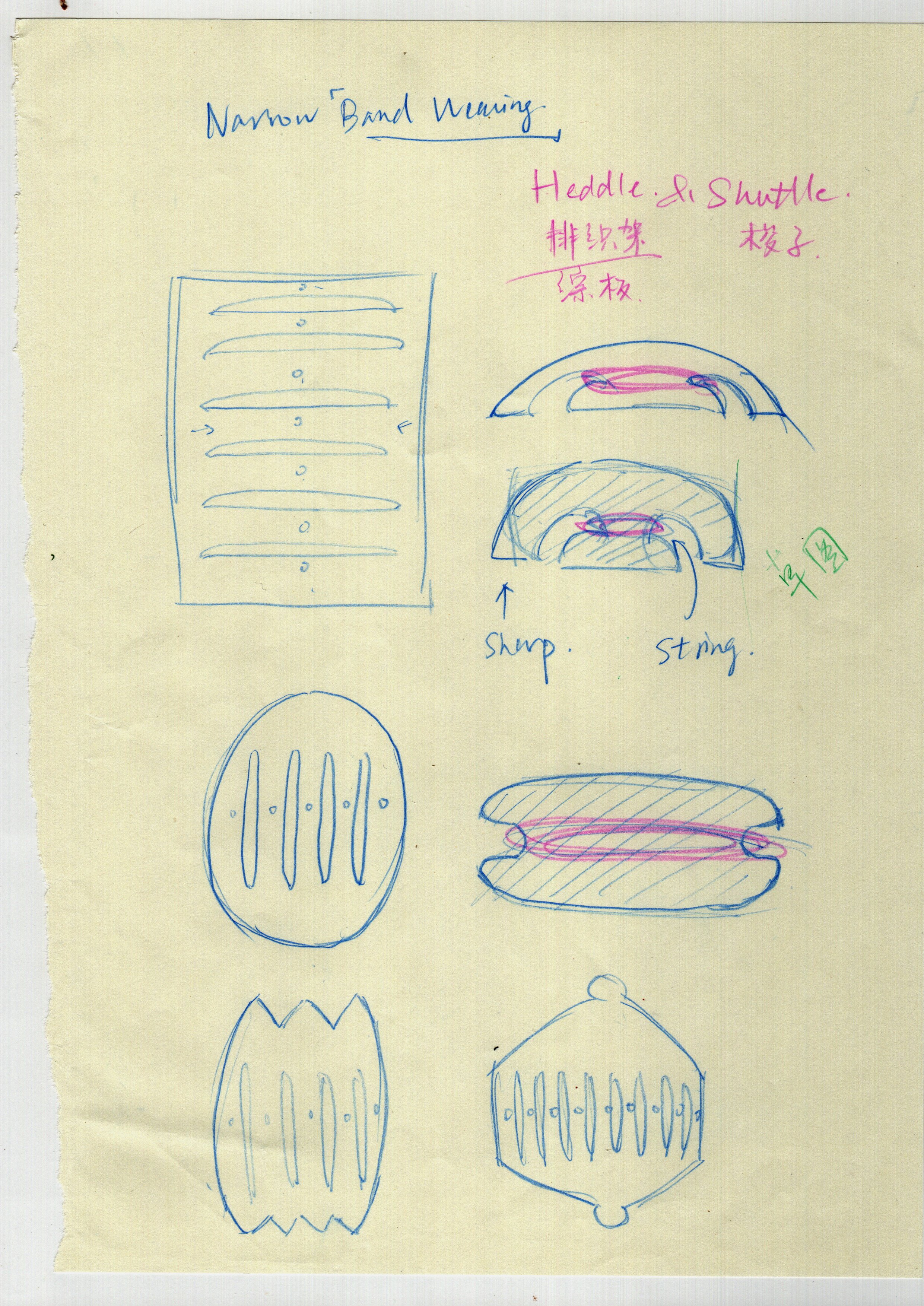
Sketches of some heddles and shuttles by Tianlan.H
Warp
The set of vertical threads held in tension on the loom or weaving board, forming the foundation of the woven band.
Weft
The horizontal threads that are woven through the warp to create the fabric or band.
Tension
The force applied to the warp threads to keep them taut during weaving. Proper tension ensures an even and consistent weave.
Jacquard Weaving
A complex weaving technique where individual warp threads are manually adjusted to pass over or under the weft, creating intricate designs and patterns. This method allows for detailed and multicolored motifs, making the final woven product more decorative and intricate.
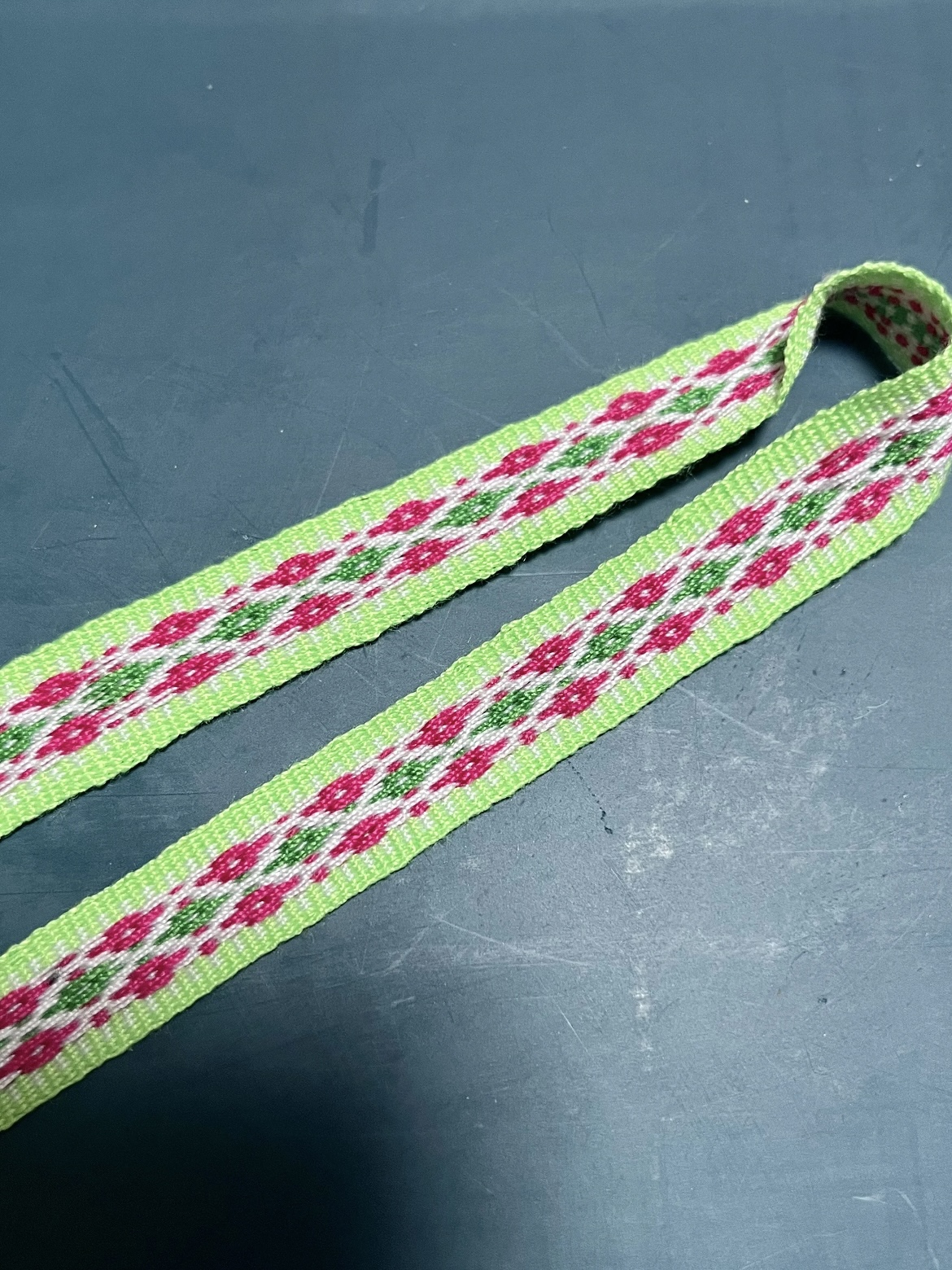
A traditional Chinese Li brocade with complex interwoven Jacquard patterns
Cotton
A soft, natural fiber that is commonly used in band weaving for its durability and comfort. Cotton threads are often chosen for their breathability and ease of handling.
Linen
A natural fiber made from the flax plant, linen is strong and absorbent, making it suitable for durable, high-quality woven bands.
Wool
A natural fiber obtained from sheep, wool is known for its warmth and flexibility. It is sometimes used in band weaving to create softer, warmer textures.
Warping
The process of setting up the warp threads on the weaving board, which forms the foundation of the weaving.
Weaving
The act of interlacing the weft threads through the warp threads using a shuttle to create the band or fabric.
Adjusting Tension
Maintaining or modifying the tension of the warp threads by adjusting the body position or the loom to ensure consistent weaving.
Patterning
The process of creating designs or patterns in the woven band by manipulating the warp and weft threads or by using different colored threads.
Finishing
The final steps of trimming loose threads, securing the ends, and sometimes adding decorative elements or knots to complete the band.
